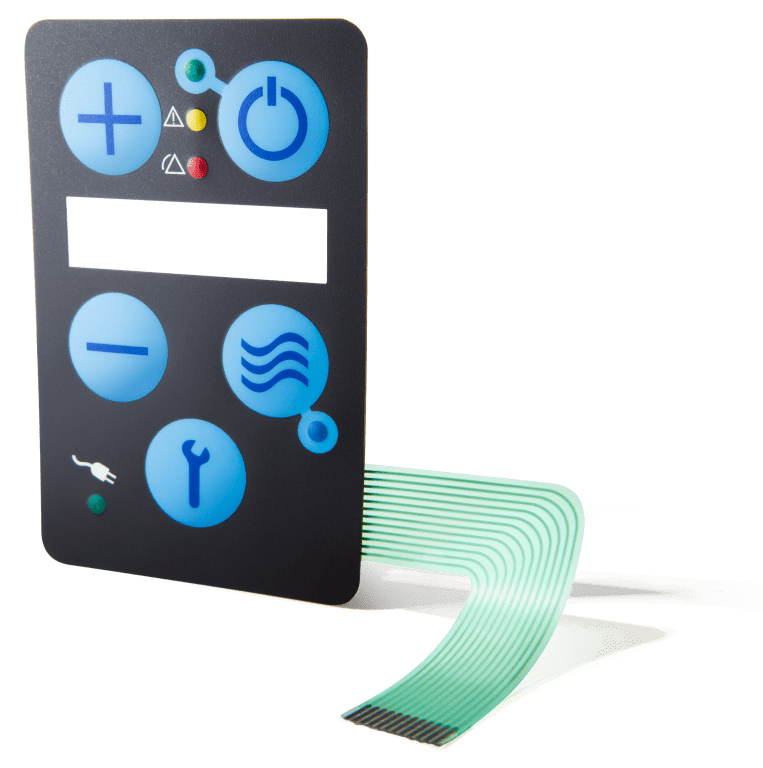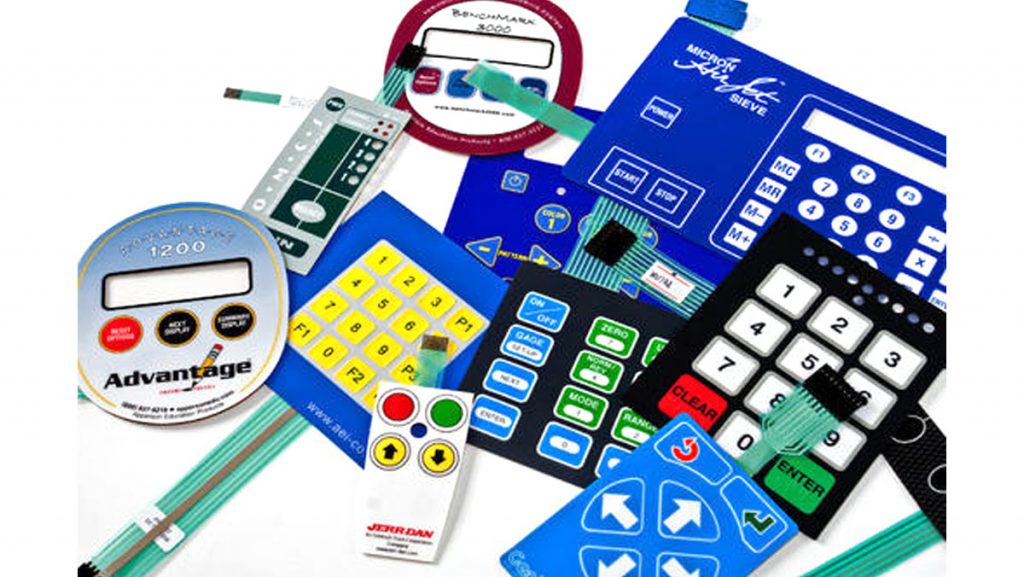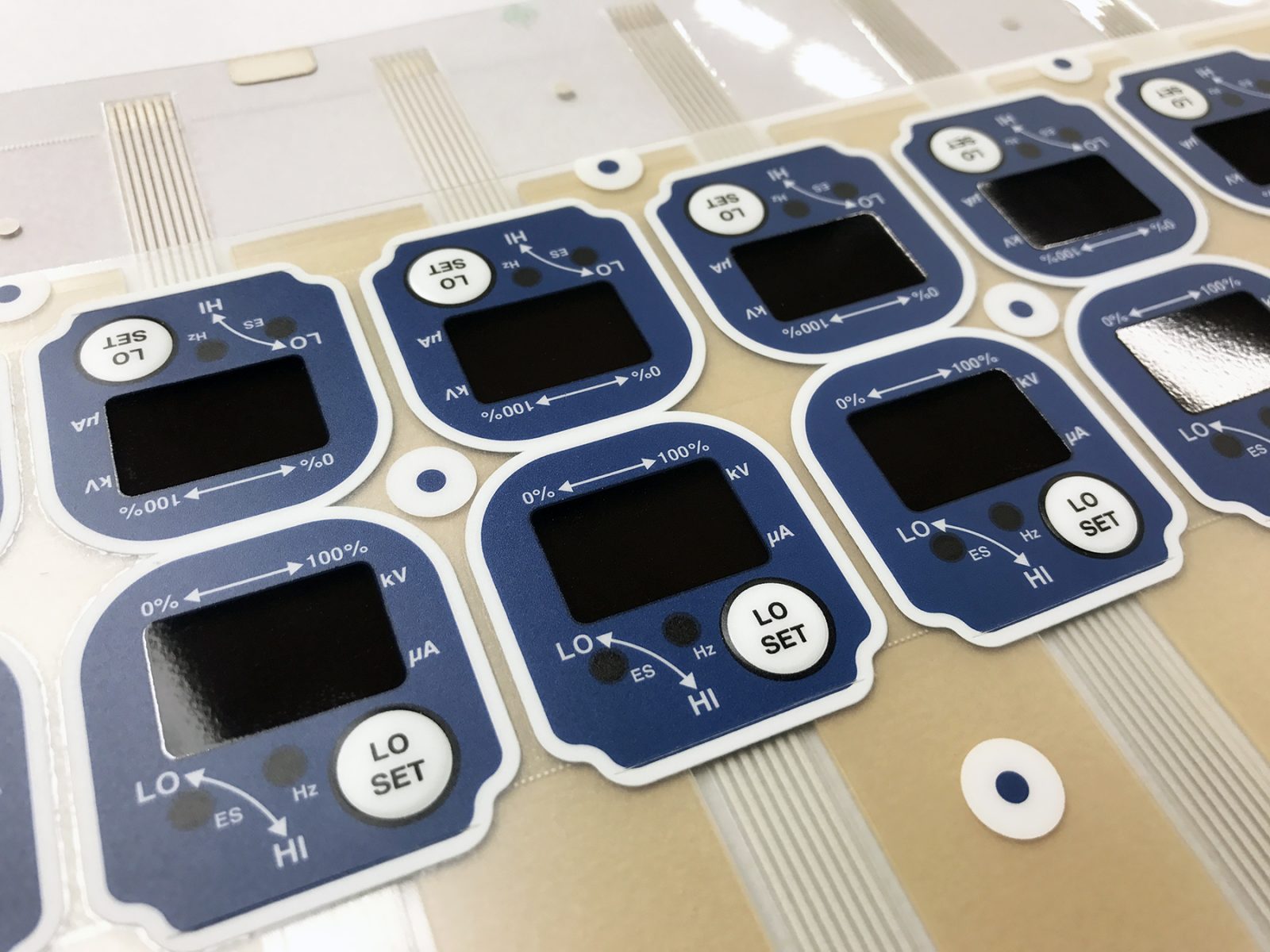Recognizing the Value of Membrane Switches in User User Interfaces
Membrane buttons are essential parts in the style of effective interface, helping with not just functionality yet also boosting aesthetic allure and user communication. Their unique attributes, such as resistance to personalized styles and ecological elements, make them ideal for a diverse range of applications throughout multiple sectors. As we explore the future patterns and numerous advantages related to Membrane technology, it comes to be clear that these buttons are greater than simply components; they represent a merging of advancement and practicality. The ramifications of this technology on individual experience deserve analyzing better.
What Are Membrane Buttons?

The spacer layer, which includes adhesive residential or commercial properties, permits the splitting up of the circuit layer from the overlay, making sure that the button remains in a non-activated state till pressed. When pressure is related to the overlay, it presses the spacer layer, connecting the gap and finishing the circuit in the underlying layer. This style not only reduces the physical space required for conventional mechanical switches yet likewise enhances the durability of the tool, as Membrane buttons are normally resistant to dirt, moisture, and various other environmental factors.
Frequently discovered in applications varying from consumer electronics to clinical devices, Membrane buttons are important to modern innovation, offering a straightforward and effective user interface that lines up with modern style needs.
Advantages of Membrane Switches
While many button innovations exist, Membrane Switches offer unique benefits that make them particularly preferable in numerous applications. One of the main advantages of Membrane switches is their portable design, which enables space-saving executions in devices where genuine estate is restricted. Their thin profile not just enhances aesthetic charm yet also assists in light-weight construction.
One more substantial advantage is their resistance to environmental aspects. Membrane switches are usually secured versus moisture, dust, and pollutants, making them excellent for use in demanding settings, such as clinical devices and industrial tools. This durability extends the life expectancy of the button, lowering maintenance costs and improving dependability.
In addition, Membrane buttons can be customized to meet particular style demands, integrating special graphics and shades that boost user interaction. Their tactile feedback options can also be tailored to supply an enjoyable customer experience. In addition, Membrane buttons are cost-efficient, specifically in high-volume applications, as they can be generated efficiently.
Applications in Different Industries

In the consumer electronic devices market, Membrane buttons prevail in tools such as microwaves, washing equipments, and remotes. Their tactile comments and visual choices boost customer experience while supplying a sleek, modern-day look. In addition, automobile manufacturers use Membrane switches in control panel controls and infotainment systems, where area is restricted, and customer interaction is crucial.
In addition, the industrial market leverages Membrane switches in control panels for equipment and equipment, enabling intuitive operation in usually severe settings. Their resistance to chemicals look at here and moisture makes sure long life and reliability in these applications. On the whole, the adaptability of Membrane Switches adds significantly to their extensive usage, making them essential in different technical domains.
Design Considerations for Membrane Buttons

When developing Membrane buttons, a number of vital factors to consider must be considered to guarantee ideal performance and customer experience. The choice of materials is crucial; selecting durable, top quality substrates can enhance the button's long life and resistance to ecological aspects such as wetness and temperature fluctuations.
Secondly, the layout of the visuals overlay must prioritize clarity and ease of usage. Symbols and text should be legible, and the format needs to assist in user-friendly interaction (membrane switches). Additionally, responsive comments is vital; incorporating a tactile dome or various other systems can enhance the customer experience by supplying physical confirmation of activation
Another vital aspect is the switch's electric efficiency. Designers have to make sure that the conductive traces are appropriately developed to minimize resistance and stay clear of signal interference. This involves analyzing the needed actuation pressure and making sure compatibility with the electronic parts they will user interface with.

Future Trends in Membrane Modern Technology
As innovation continues to development, Membrane switches are poised to advance substantially, driven by innovations in materials and making techniques. One emerging fad is the incorporation of sophisticated products, such as adaptable substrates and conductive inks, which improve longevity and decrease the general weight of Membrane buttons. These materials not only boost the tactile reaction however additionally permit the style of buttons that can hold up against harsher environmental conditions.
In addition, the integration of touch-sensitive innovations is changing typical website link Membrane Switches into more interactive individual interfaces. Capacitive touch sensing units installed within Membrane button panels can offer a more receptive and instinctive user experience, straightening with the growing demand for smooth, modern layouts in consumer electronic devices.
In addition, advancements in printing strategies, such as electronic and 3D printing, enable quick prototyping and modification of Membrane switches. This adaptability permits producers to react quicker to market needs and customer preferences.
Last but not least, sustainability is coming to be a substantial focus, with producers exploring environmentally friendly materials and processes. As these fads unravel, the future of Membrane innovation promises enhanced capability, visual charm, and environmental responsibility, strengthening their duty in sophisticated individual interfaces across numerous sectors.
Final Thought
In conclusion, Membrane Switches represent a vital part in the style of individual interfaces, combining capability with aesthetic flexibility. Their benefits, including sturdiness and resistance to environmental variables, make them appropriate for diverse applications throughout various sectors. Thoughtful design factors to consider enhance customer interaction and experience. As innovations in innovation proceed, the development of Membrane switches is anticipated to additional improve interface, driving technology and enhancing use in a progressively intricate technological landscape.
Membrane switches are essential parts in the design of effective individual interfaces, promoting not only functionality however additionally boosting aesthetic charm and customer communication.Membrane Switches serve as an important element in numerous user interfaces, helping with a smooth communication in between users and electronic devices.While many button modern technologies exist, Membrane visit the website Switches deal distinct advantages that make them particularly desirable in different applications.Furthermore, Membrane switches can be personalized to satisfy certain layout needs, including one-of-a-kind graphics and shades that boost customer communication.In verdict, Membrane Switches represent a crucial element in the style of user interfaces, combining functionality with aesthetic adaptability.